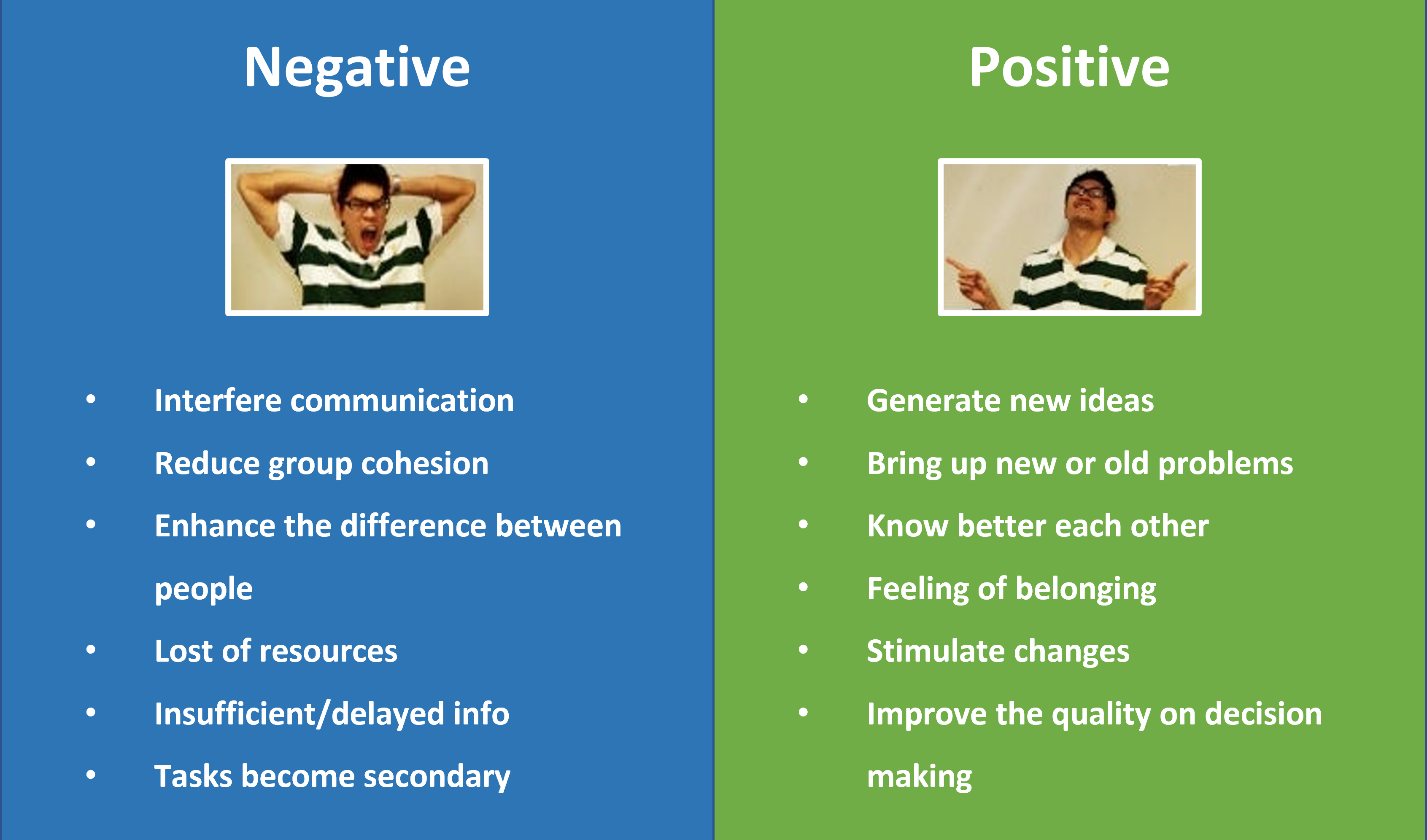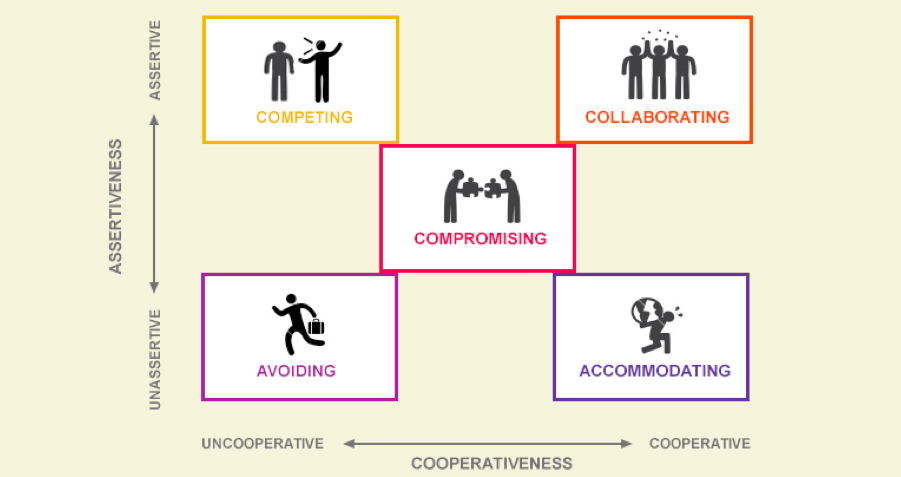.png)
Consequences & Styles
Consequences
Conflicts can have both positive and negative consequences. Here are some positive and negative consequences of conflicts
Positive consequences
- Greater understanding: Conflicts can lead to greater understanding of different perspectives, opinions, and ideas.
- Creativity and innovation: When people have different ideas and perspectives, it can lead to more creative and innovative solutions to problems.
- Growth and learning: Conflicts can be opportunities for growth and learning, as individuals are forced to challenge their assumptions and beliefs.
- Increased motivation: When individuals or groups are working towards a common goal and there is a conflict, it can increase motivation to find a solution and achieve the goal.
Negative consequences
- Decreased productivity: Conflicts can lead to decreased productivity as individuals spend more time dealing with the conflict rather than working on their tasks.
- Damage to relationships: Conflicts can damage relationships between individuals or groups, leading to decreased trust and cooperation.
- Stress and emotional harm: Conflicts can cause stress and emotional harm to individuals, leading to decreased well-being and job satisfaction.
- Escalation: Conflicts can escalate and become more serious if not resolved, potentially leading to legal action or physical harm.

To avoid negative consequences, it is important to address conflicts as soon as possible and to approach them with a willingness to listen and understand the perspectives of all parties involved. This can lead to a more positive outcome and potentially improve relationships and productivity in the long run.
To manage conflicts effectively, it is important to address them early on and to approach them with a mindset of collaboration and problem-solving. Developing effective communication skills and the ability to empathize with others can also be helpful in preventing and resolving conflicts. Finally, it is important to be willing to compromise and find solutions that are mutually beneficial for all parties involved.
Here are some recommendations for avoiding negative consequences of conflicts:
Communication: Effective communication is key to avoiding negative consequences of conflicts. Encourage open communication channels and active listening to understand each other's perspectives.
Conflict resolution training: Provide training for employees on how to resolve conflicts effectively. This can help to reduce negative consequences and ensure that conflicts are resolved in a constructive manner.
Conflict management policies: Develop and implement conflict management policies that provide clear guidelines for dealing with conflicts. This can help to prevent conflicts from escalating and ensure that they are resolved in a fair and consistent manner.
Address underlying issues: Address any underlying issues that may be contributing to conflicts, such as poor working conditions, lack of resources, or unclear expectations.
Encourage collaboration: Encourage collaboration and teamwork to foster a positive work environment. When employees work together towards a common goal, they are less likely to engage in conflicts.
By implementing these recommendations, organizations can create a positive work environment where conflicts are handled effectively, and negative consequences are avoided. Until now, we have explored the nature of conflict, including its causes, consequences, and types.
By understanding the nature of conflict, we can begin to develop strategies and techniques for managing conflict in a way that maximizes positive outcomes. we will continue exploring the five conflict management styles and learn how to choose the most effective style for a given situation.
Understanding Conflicts managing styles

Competing: The competing style involves pursuing one's own interests at the expense of the other person's interests. This style is appropriate when quick, decisive action is needed, or when one's position is strong and the other person's position is weak. However, overuse of this style can lead to damaged relationships and can breed resentment and hostility.
Collaborating: The collaborating style involves working together to find a mutually beneficial solution that satisfies both parties' interests. This style is appropriate when both parties have important concerns and when there is a high level of trust and openness between them. However, this style can be time-consuming and may not be appropriate in situations where quick action is needed.
Compromising: The compromising style involves finding a middle ground that partially satisfies both parties' interests. This style is appropriate when both parties are equally powerful, when time is limited, and when a temporary solution is needed. However, overuse of this style can lead to both parties feeling dissatisfied with the outcome.
Avoiding: The avoiding style involves withdrawing from the conflict or postponing action until a later time. This style is appropriate when the issue is minor or when emotions are running high and more time is needed to cool down. However, overuse of this style can lead to the issue remaining unresolved and can damage relationships.
Accommodating: The accommodating style involves sacrificing one's own interests in order to meet the other person's interests. This style is appropriate when preserving the relationship is more important than the issue at hand, or when one party has a weak position and needs to maintain a good relationship with the other party. However, overuse of this style can lead to one party feeling exploited or taken advantage of.
It's important to note that there is no one-size-fits-all solution to conflict management. Each style has its own advantages and disadvantages, and the appropriate style to use will depend on the specific situation and the individuals involved. Effective conflict management requires being able to recognize the various styles, and being able to use them appropriately and flexibly to achieve the best possible outcome.